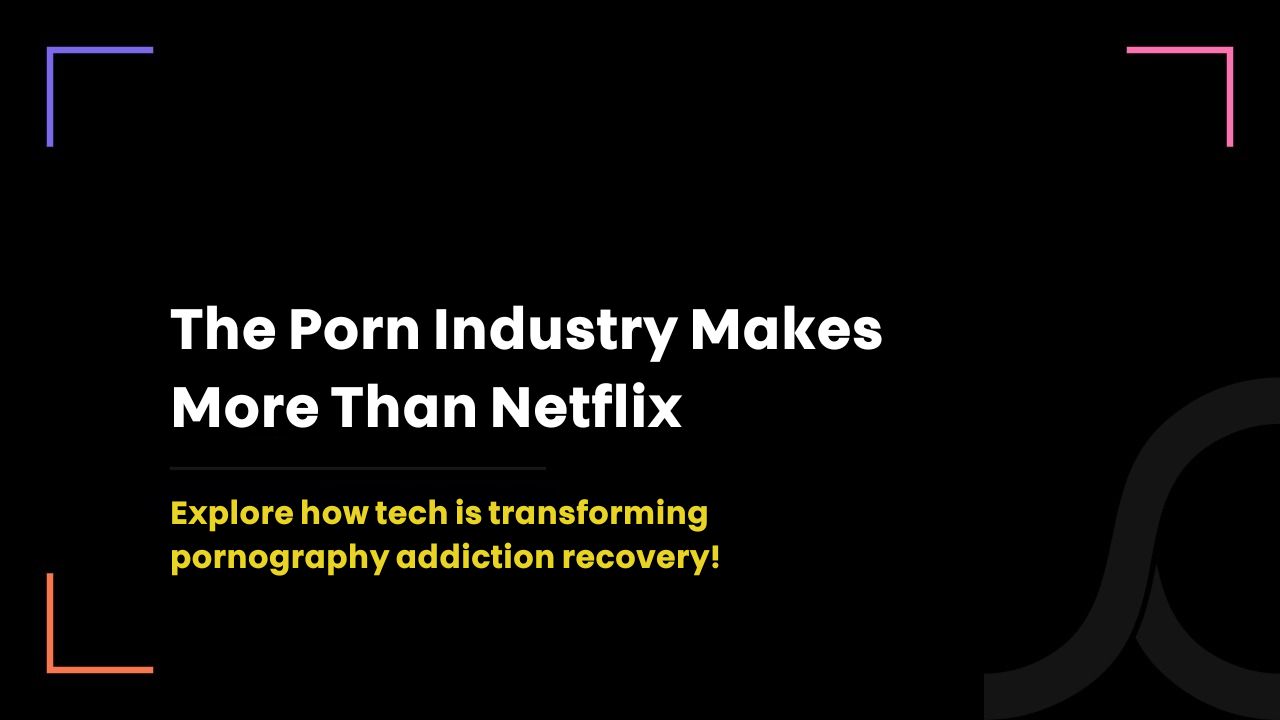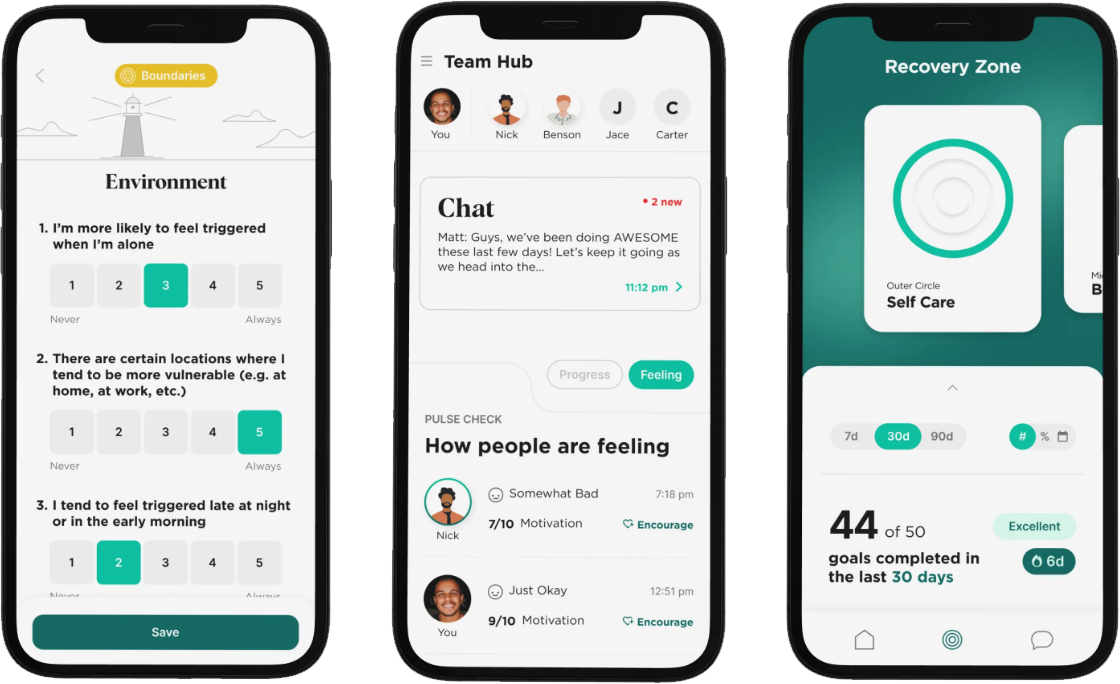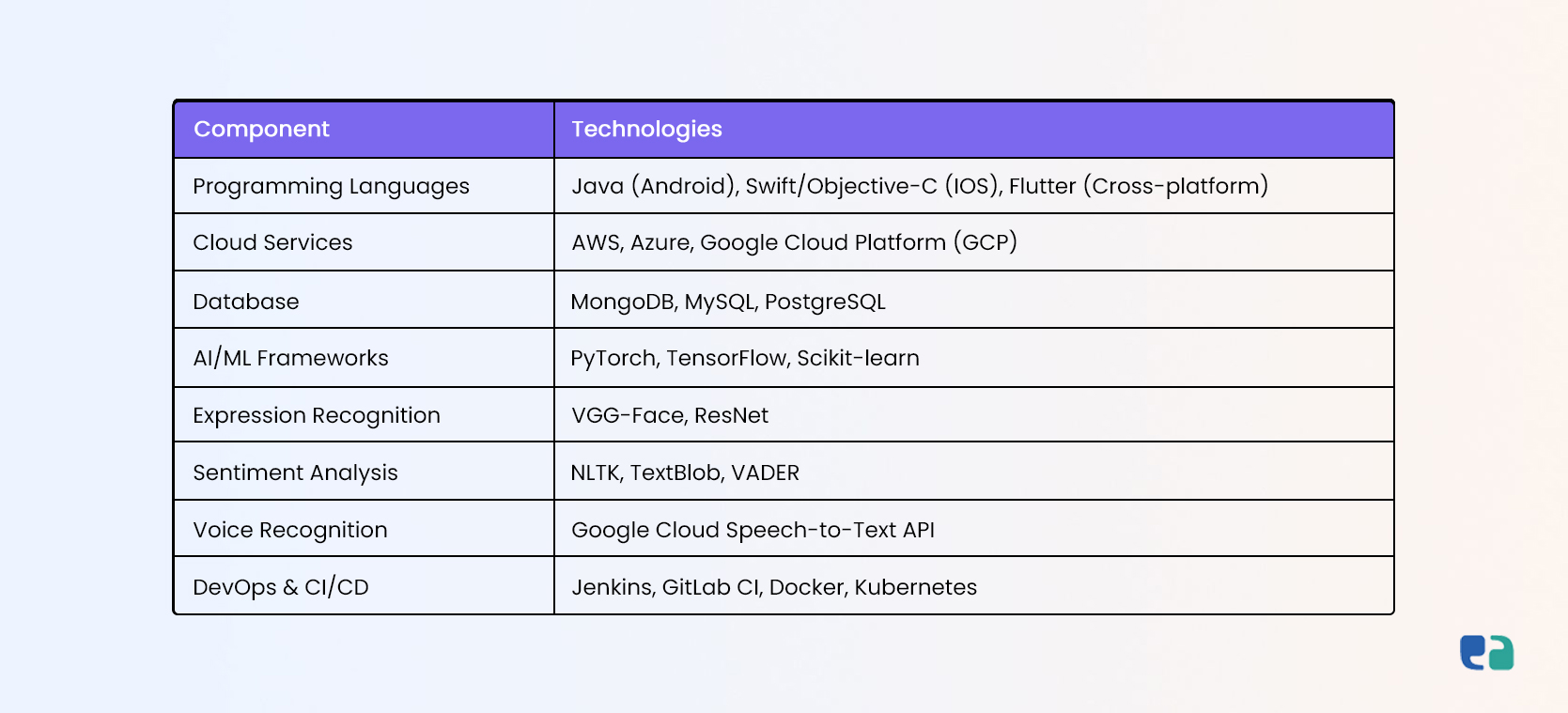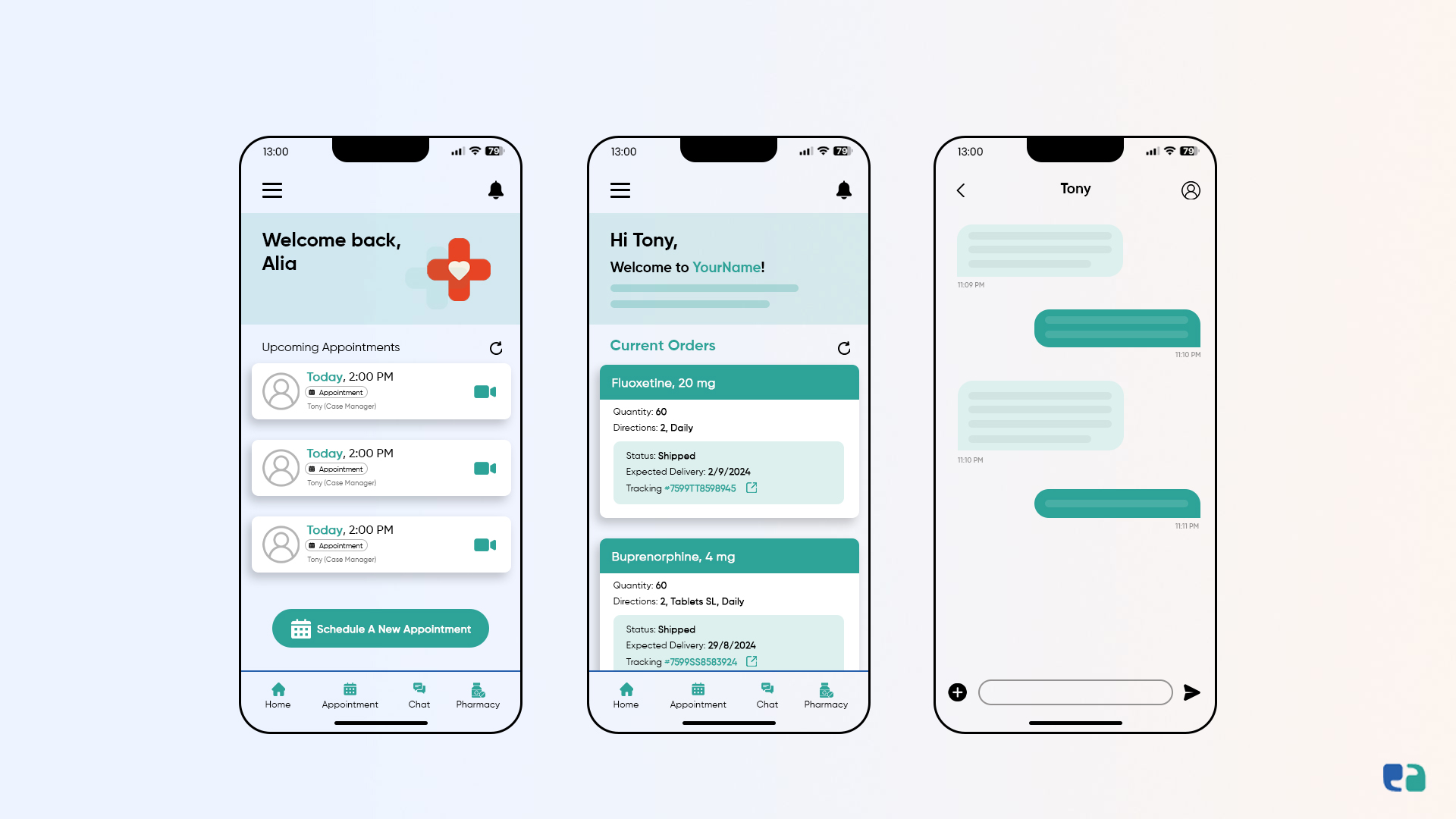Building a Tech Solution for Addiction Recovery: Insights from Relay Health

6 months ago
Addiction recovery solutions are more needed than ever.
In the U.S., around 21 million people struggle with addiction, yet only a small percentage receive treatment.
Traditional methods, like therapy and 12-step programs, can be expensive, hard to access, and time-consuming.
Technology is stepping in to bridge the gap.
Apps like Relay Health, which helps those battling pornography addiction, are making recovery more accessible by connecting users with peer support anytime, anywhere.
The addiction treatment market is booming—valued at $1.4 billion in Canada and expected to reach $3.5 billion by 2030.
If you're an entrepreneur or healthcare provider, this is your chance to make a real impact.
Let’s explore how to develop a custom addiction recovery app like Relay Health!
The Struggles in Addiction Recovery: Understanding the Problem
People often feel shame, isolation, and a lack of continuous support.
Turning to family or friends can sometimes result in judgment or misunderstanding, making it even harder to seek help.
Many find peer support helpful, but staying connected between meetings is tough.
Without consistent support, feelings of loneliness and disconnection can grow, making recovery more difficult.
Peer support plays a crucial role in overcoming these challenges.
It helps individuals connect with others who truly understand their struggles, reducing isolation and building a sense of community.
Consistent, accessible support is key to staying on track in recovery.
Relay's Journey: From Personal Struggle to Tech-Driven Solution

Relay's story starts with its CEO, Chandler Rogers. In high school, he faced pornography addiction.
This struggle was lonely. He feared judgment and shame, which made it hard to reach out for help.
Eventually, Chandler opened up to his bishop and felt supported.
This experience made him realize how isolating addiction can be. He found strength in a group program, connecting with others who understood his journey.
Inspired by his experience and conversations with peers, Chandler and his friends at BYU wanted to create a solution.
They developed an app that connects users in small groups of 5 to 8 people. In these groups, members learn to manage their emotions and identify triggers.
At first, the app was free, but engagement was low.
After introducing a small subscription fee of $3.99 a month, user activity increased significantly, leading to more success stories.
How Relay Health Mobile App Works: Top 5 Features
Relay Health offers key features to support users on their recovery journey:
1. Daily Check-Ins
Users log daily progress as a "win" or "loss" and share insights with their team to identify patterns.
2. Pulse Checks
Scheduled reminders prompt users to assess their emotional state and seek real-time support from their team.
3. Red Flag System
Users can tap a red flag icon when feeling vulnerable, instantly alerting their team for immediate support.
4. Team Chat
Instant messaging fosters community by allowing users to connect and share experiences with team members.
5. Progress Tracking
Dashboards provide visual representations of individual and team progress, helping users stay motivated and celebrate milestones.
4 Lessons from Relay Helth's App Development Journey

Relay Health's path to creating an impactful app offers essential lessons for anyone interested in developing similar solutions in the addiction recovery space. Here are some key insights to consider:
1. Initial Concept and Research
Chandler Rogers drew from his personal experiences and conversations to identify a gap in existing support systems.
He discovered a need for an accessible platform that bridges the gap between formal therapy sessions and peer support.
Understanding your audience through personal insights and user research is crucial.
2. Early Testing and Iteration
Relay began as a Slack channel, allowing the team to test their idea without significant investment.
This data-driven approach enabled them to gather feedback and make necessary adjustments before committing to a dedicated app.
3. Transition to a Paid Subscription Model
Initially launched as a free app with around 500 users, engagement was low.
After introducing a small subscription fee of $3.99 a month, user commitment and activity increased, highlighting the importance of adapting based on user behavior.
4. Data-Driven Feature Development
Relay incorporates several features based on user data:
- Matching Algorithm: Users are paired based on factors like age and interests, enhancing support group compatibility.
- Mood Tracking and "Pulse Checks": Users log daily "wins" and "losses," allowing for mood tracking and immediate support requests.
- Engagement Metrics: Features like confetti notifications for milestones help track engagement and encourage ongoing participation.
Other Popular Addiction Recovery Apps in Canada and USA
1. I Am Sober

A widely-used app that helps people track their sobriety and stay motivated on their recovery journey.
It offers customizable sobriety counters, goal setting, and mood journaling to keep users engaged.
The app also provides rewards and integrates with health and fitness apps, promoting a holistic approach to recovery.
Available on both iPhone and Android, I Am Sober is free with in-app purchases and has a high rating of 4.9 stars on both platforms.
2. Sober Grid

A social networking app that connects people in recovery.
It creates a supportive community where users can find local meetings, chat privately, and join online support groups.
With options for accountability partners and peer coaching, Sober Grid offers additional help for those who need it.
The app is free with in-app purchases and is available on iOS with a 4.9-star rating, and on Android with 4 stars.
Want to Build an Impactful Addiction Recovery App? Consider These Futuristic Features!
Building a successful addiction recovery app means integrating features that truly meet the needs of users. Here are some futuristic features to consider:
- Personalized Goal Tracker
- Real-time Support Chat
- Progress History Timeline
- AI-driven Progress Insights
- Interactive Daily Challenges
- Community Forum Integration
- Language Options
- Smart Notification Scheduler
- Emergency Helpline Integration
- Daily Journal Tracker
- Customizable Reminders
- Voice-guided Meditation
- Integration with Wearable Devices
- Feedback and Improvement System
Recommended Tech Stack to Build Your Addiction Recovery App
Creating a successful addiction recovery app requires careful consideration of features and technology integration.
Drawing insights from Relay Health, here are key components to consider when developing your addiction care solution:

Keep in mind that this is a general tech stack. For more tailored insights, connect with tech experts by filling out this form.
4 Tips for Building Your Own Addiction Recovery Solution
If you’re inspired by Relay Health and want to create your own tech-based addiction recovery solution, here are some practical tips to get you started:
1. Do Your Homework
Start with thorough user research.
Talk to people in recovery, therapists, and support group leaders. Understand their challenges and needs.
What gaps exist in their current support systems? This insight will guide your development.
2. Make It User-Friendly
Prioritize user experience.
Your app should be easy to navigate. Recovery is tough enough; the app should offer support, not confusion.
A clean and simple design can really help users feel comfortable.
3. Build a Community
Foster connection among users.
Consider features that encourage sharing experiences and supporting each other.
Relay's team-based structure, with its “red flag” notification for instant help, is a great example. Look for ways to create a sense of belonging and shared goals.
4. Think About a Subscription Model
Initially, Relay was a free app but learned that a small subscription fee boosted user engagement.
This model attracts those who are serious about their recovery and helps maintain the app's sustainability.

Custom Addiction Recovery App vs. SaaS: Why Going Custom Matters
Choosing between a custom addiction recovery app and a SaaS platform can be tricky.
Although SaaS may look cheaper upfront, a custom solution offers distinct advantages that enhance user support and experience.
Here’s why going custom is worth it.
1. Tailored Features
Custom apps enable you to design features tailored to your target audience.
Unlike generic SaaS platforms, a custom solution addresses the unique challenges of individuals in recovery, providing the specialized support they need.
2. Scalability
As your user base grows, so should your app.
Custom solutions are built with scalability in mind, enabling you to add features and enhance performance without the limitations commonly found in SaaS products.
3. Data Privacy and Security
Custom apps can implement robust security measures that comply with regulations like HIPAA, PHIPA, and PIPEDA, ensuring responsible handling of user data and building trust within your community.
4. User Experience
You can focus on intuitive navigation and engaging interfaces tailored to your users, enhancing satisfaction and retention.
5. Ongoing Support and Maintenance
With a custom app, you retain control over updates and maintenance.
This allows for rapid responses to user feedback and the flexibility to make adjustments that keep your app relevant and effective—something often limited in SaaS options.
Real-World Examples: Our Success Story
Recently, we had the opportunity to work with a client who needed an addiction recovery app.
We jumped at the chance to create something impactful!
We’re excited to share images of the white-label app we developed for them.
The best part? We deployed it in just two months!
Take a look at what we’ve been working on and see how we’re contributing to the fight against addiction.


